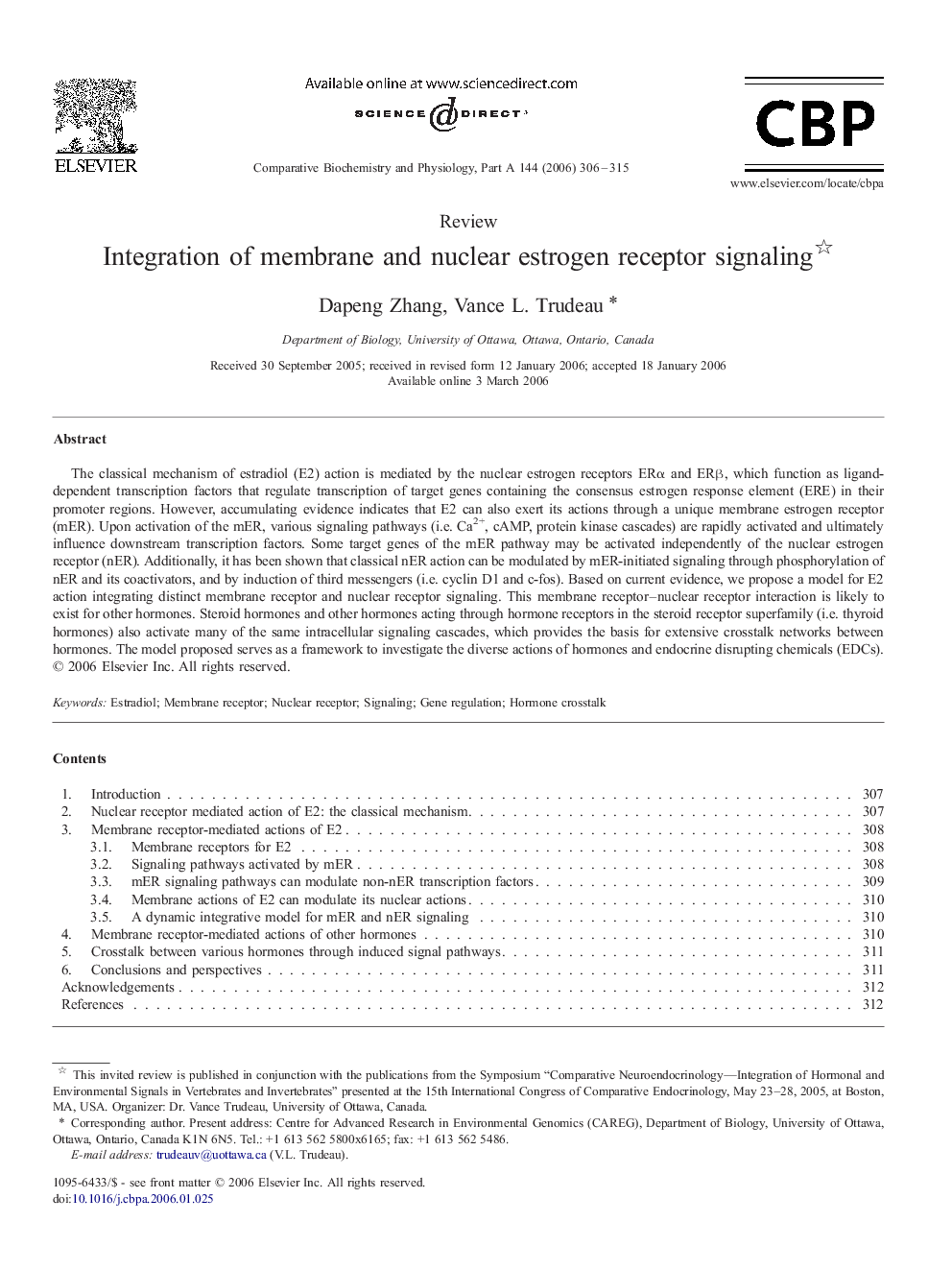| Article ID | Journal | Published Year | Pages | File Type |
|---|---|---|---|---|
| 1974509 | Comparative Biochemistry and Physiology Part A: Molecular & Integrative Physiology | 2006 | 10 Pages |
The classical mechanism of estradiol (E2) action is mediated by the nuclear estrogen receptors ERα and ERβ, which function as ligand-dependent transcription factors that regulate transcription of target genes containing the consensus estrogen response element (ERE) in their promoter regions. However, accumulating evidence indicates that E2 can also exert its actions through a unique membrane estrogen receptor (mER). Upon activation of the mER, various signaling pathways (i.e. Ca2+, cAMP, protein kinase cascades) are rapidly activated and ultimately influence downstream transcription factors. Some target genes of the mER pathway may be activated independently of the nuclear estrogen receptor (nER). Additionally, it has been shown that classical nER action can be modulated by mER-initiated signaling through phosphorylation of nER and its coactivators, and by induction of third messengers (i.e. cyclin D1 and c-fos). Based on current evidence, we propose a model for E2 action integrating distinct membrane receptor and nuclear receptor signaling. This membrane receptor–nuclear receptor interaction is likely to exist for other hormones. Steroid hormones and other hormones acting through hormone receptors in the steroid receptor superfamily (i.e. thyroid hormones) also activate many of the same intracellular signaling cascades, which provides the basis for extensive crosstalk networks between hormones. The model proposed serves as a framework to investigate the diverse actions of hormones and endocrine disrupting chemicals (EDCs).
